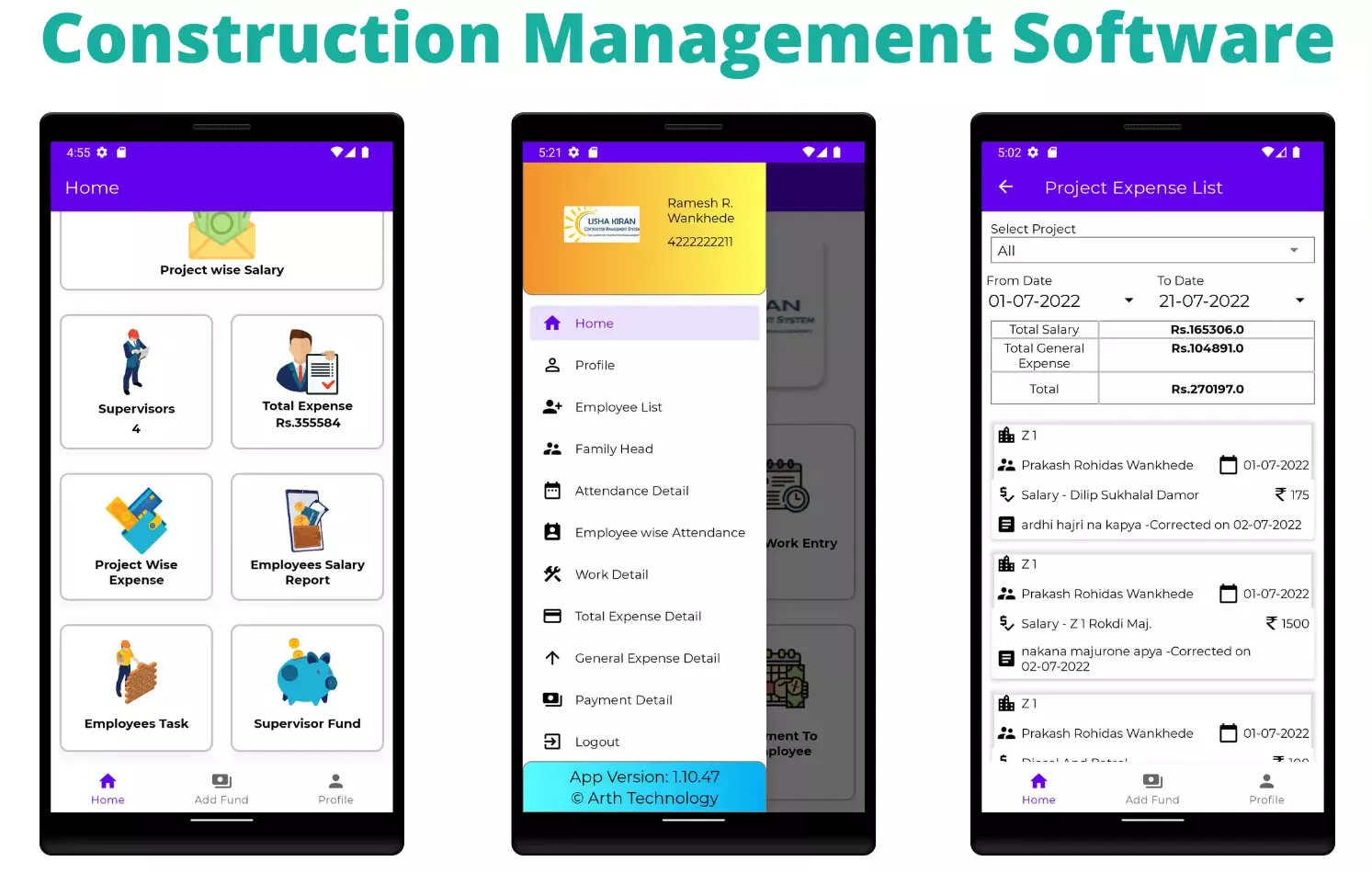Customized Building And Construction Monitoring Software Application: Optimizing Resource Allotment and Budgeting Techniques
In the realm of modern building and construction monitoring, the relevance of tailored software services can not be overemphasized. These advanced tools offer a nuanced strategy to maximizing resource allocation and budgeting approaches, crucial elements for successful task implementation. By delving right into the ins and outs of how such software can boost resource appropriation techniques and refine spending plan optimization methods, a clear pathway towards increased task effectiveness emerges. In this electronic age where precision and performance regime supreme, discovering the effect of customized building administration software on these crucial aspects discovers a realm of possibilities that can shape the future of the market.
Benefits of Tailored Software Program Solutions
Tailored software application services provide a myriad of advantages to construction administration firms seeking to boost performance and simplify operations. By tailoring software solutions to resolve project monitoring, organizing, budgeting, and resource allocation, companies can maximize their process and accomplish greater performance.
An additional benefit of tailored software remedies is the capacity to give real-time understandings and analytics. Building management companies can take advantage of data-driven decision-making to keep track of task development, identify traffic jams, and make modifications promptly. This aggressive technique enhances task results and aids firms remain on track with timelines and budget plans.
Enhanced Resource Appropriation Techniques
Applying efficient source allowance methods is vital for construction administration companies to optimize job end results and optimize performance. Enhanced resource appropriation methods include tactically appointing personnel, equipment, and products to particular tasks to guarantee optimal use of resources. One key facet of enhanced resource allowance is the capacity to properly anticipate project requirements and assign sources as necessary. By leveraging building and construction management software that provides real-time tracking and reporting functions, companies can dynamically change allowances as task requires advance, bring about boosted performance and cost-effectiveness.
Additionally, enhanced source allotment techniques enable building and construction companies to identify and address possible bottlenecks or source restraints proactively. By carrying out normal evaluations of resource application and efficiency metrics, supervisors can make data-driven choices to redistribute sources efficiently and prevent hold-ups. This proactive strategy not only boosts job timelines but additionally reduces the threat of budget plan overruns because of ineffective resource appropriation.
Budget Plan Optimization Techniques
To accomplish optimal monetary efficiency in building projects, efficient spending plan optimization methods play a crucial function in making certain expense control and task success. One key method is the facility of a comprehensive task budget that designates sources based on concern and critical needs. By clearly specifying the extent of work, setting practical cost quotes, and continually monitoring expenses, building supervisors can identify prospective cost overruns early and take rehabilitative actions. Furthermore, carrying out worth design practices can help improve job prices without endangering quality. This involves analyzing each project element to determine chances for price financial savings while keeping efficiency criteria. Leveraging historic information and sector criteria enables construction managers to make informed choices concerning spending plan allowances and determine areas where spending can be optimized. By incorporating these spending plan optimization methods into construction management software program, task stakeholders can improve monetary planning, resource allowance, and general budget management to drive task success and productivity.

Influence on Job Efficiency
Maximizing building monitoring software application can considerably enhance task effectiveness by streamlining communication, boosting partnership, and promoting data-driven decision-making. By streamlining task details, stakeholders can quickly access real-time updates, lowering delays triggered by miscommunication or outdated data. Boosted collaboration functions make it possible for team participants to function together effortlessly, no matter their physical area, cultivating a more cohesive and effective job environment. Furthermore, building and construction management software application can give valuable insights with information analytics, permitting project managers to make informed choices promptly and accurately.
In addition, the automation of regular jobs you can find out more such as scheduling, budget plan tracking, and resource allocation can free up valuable time for task groups to concentrate on essential tasks, inevitably accelerating job delivery. The ability to monitor project progress in real-time and identify possible traffic jams makes it possible for aggressive analytical, avoiding issues from escalating and causing hold-ups. Generally, the effect of tailored building and construction administration software application on project efficiency is obvious, using a competitive benefit by enhancing workflows and optimizing efficiency.
Future Trends in Construction Software Program
As the building industry remains to develop, advancements in modern technology are shaping the future landscape of construction software program services. One substantial pattern on the perspective is the enhancing integration of man-made intelligence (AI) and maker knowing capacities in building software program. These innovations have the possible to transform how construction jobs are managed by making it possible for anticipating analytics, automated decision-making procedures, and boosted project understandings.
An additional future pattern in building software program is the growing emphasis on cloud-based remedies. Cloud technology uses increased versatility, scalability, and access for construction teams, enabling real-time cooperation and data sharing across job stakeholders. This change in the direction of cloud-based software application is anticipated to enhance job effectiveness, simplify interaction, and improve overall job results.
In addition, the surge of Building Information Modeling (BIM) is expected to continue shaping the building software landscape. BIM see this site software helps with 3D modeling, visualization, and data administration, causing improved job control, lowered mistakes, and boosted task end results. Welcoming these future fads in building and construction software program will certainly be crucial for companies wanting to stay competitive and drive innovation in the industry.
Verdict
To conclude, tailored construction monitoring software program uses various advantages such as improved resource allocation approaches and budget plan optimization techniques. This software program has a considerable influence on task effectiveness by improving procedures and enhancing overall efficiency (australian construction software). As technology proceeds to advancement, future fads in building software program are expected additional reading to further enhance resource allowance and budgeting techniques for building and construction jobs